| Cuba |
|
| Havana |
|
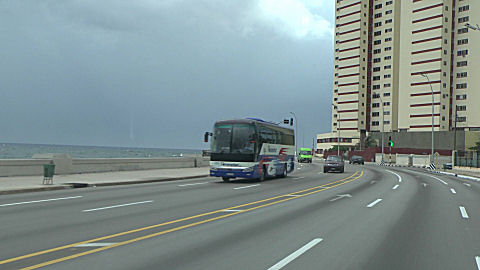 |
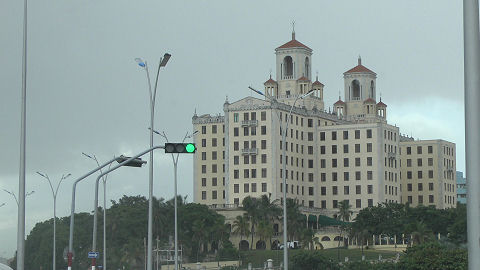 |
| Leaving the hotel
for Central Havana the coach headed along the length of the Malecon past
the Hotel Nacional which opened in 1930 and where Winston Churchill
once stayed - PHOTOs Malcolm McCrow |
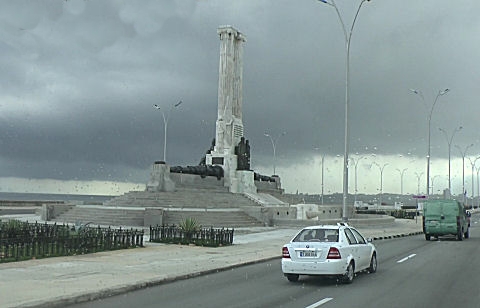 |
 |
| The restored
memorial on the Malecon to the crew of the USS MAINE blown up in Havana Harbour in 1902.
The US government blamed Spain.
The Capitol seen during a morning rain storm - PHOTOs Malcolm
McCrow |
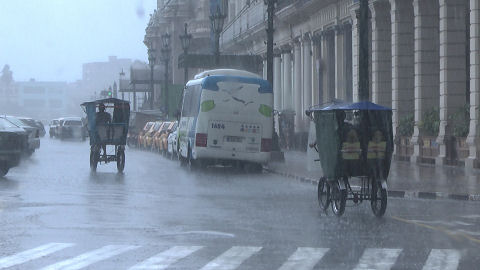 |
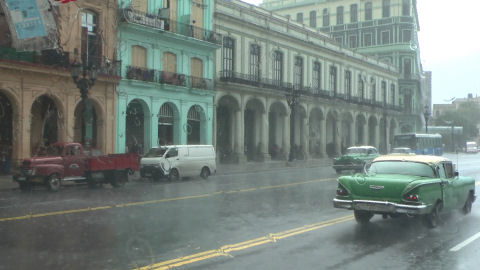 |
| Pedal tricycles
and vintage automobiles in torrential rain
along the Prado in October - PHOTOs Malcolm McCrow |
 |
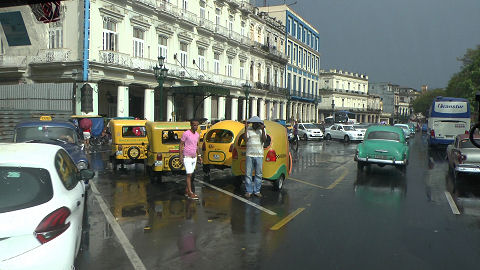 |
|
Vintage 1950 American
automobiles mix with modern cars and yellow coco taxis near the Capitol
- PHOTOs Malcolm McCrow |
 |
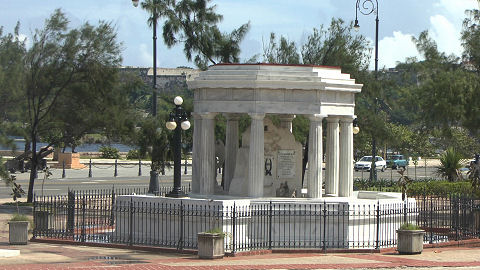 |
| The Morro Lighthouse viewed from
the Malecon. The Memorial to the Medical Students is nearby at the
junction of the Malecon and the Prado. Six first year medical students
were executed by the Spanish in 1871 after being falsely accused of
desecrating the tomb of a Spanish journalist - PHOTOs Malcolm McCrow |
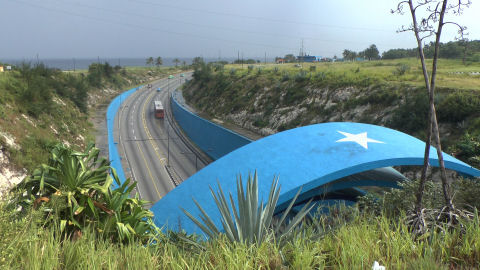 |
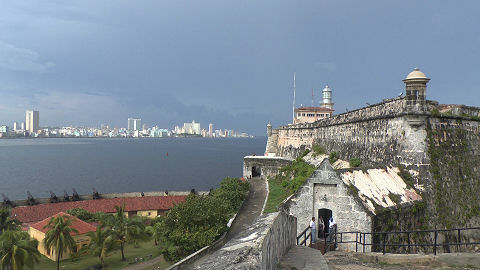 |
| The Havana Bay
Tunnel was built in1957-58 by a French company and crosses the the Bay's
narrow entrance which has been guarded since 1589 by the Castillo de
los Tres Reyes del Morro - the Castle of the Three Morro Kings -
PHOTOs Malcolm McCrow |
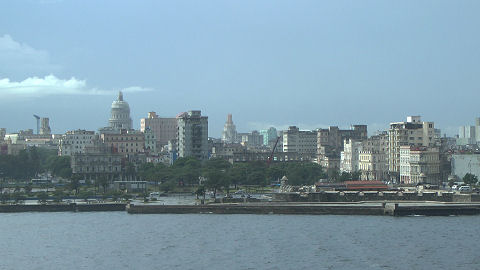 |
 |
| The City of Havana
viewed from los Tres Reyes del Morro - PHOTOs Malcolm McCrow |
 |
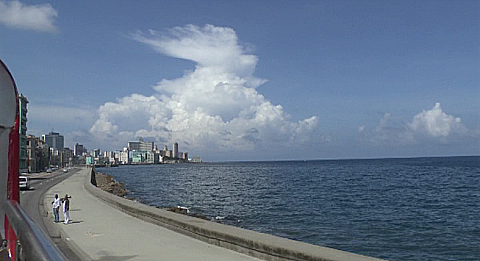 |
| Views taken from
the Hop-on Hop-off Tour Bus as it heads west along the Malecon - PHOTOs
Malcolm McCrow |
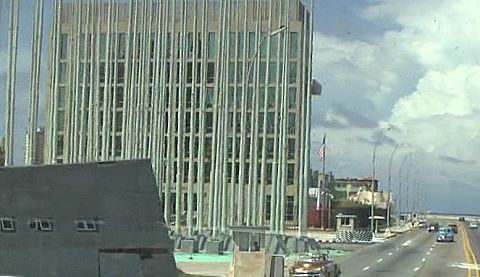 |
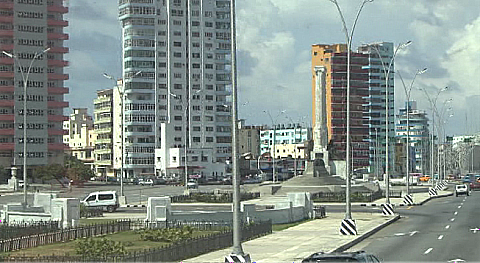 |
| The US Embassy
behind a phalanx of bare flag standards; at one time a Cuban flag
was displayed on each. Towering flats form a backdrop to the
memorial to the USS MAINE - PHOTOs Malcolm McCrow |
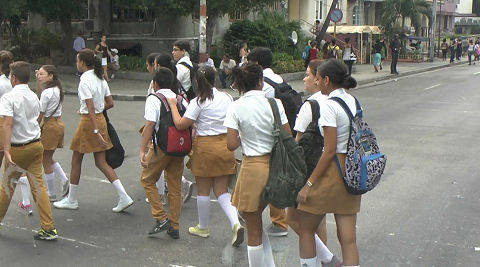 |
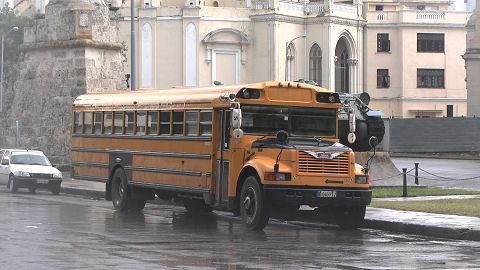 |
|
All secondary schools in Cuba require pupils to wear this
uniform. Secondhand US school buses, many imported from Canada, are
a common sight throughout Cuba. This one is parked outside the
Museo de la Revolución
- PHOTOs Malcolm McCrow |
 |
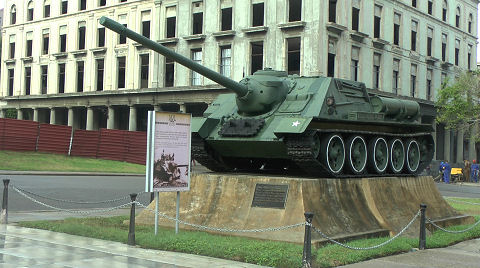 |
|
Formerly
the Presidential Palace and now the
Museo de la Revolución
in front of
which stands the Soviet S100 self propelled gun used by Fidel Castro
- PHOTOs Malcolm McCrow
|
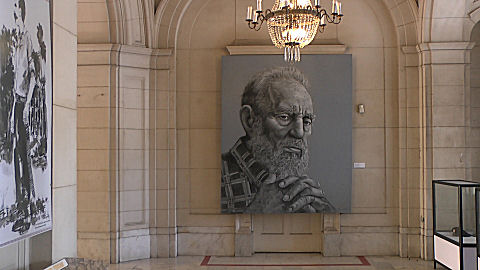 |
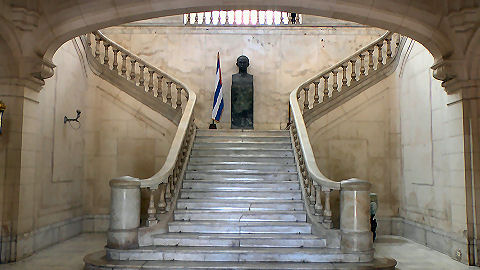 |
|
A portrait of Fidel Castro hangs on the wall near the marble main stair
which leads up to the Hall of Mirrors
- PHOTOs Malcolm McCrow |
 |
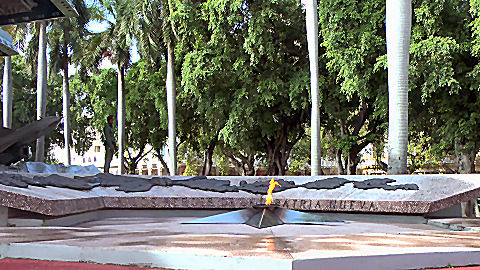 |
|
In what had been the Palace Gardens, an eternal flame burns in honour of
the Heroes of the Revolution
- PHOTOs Malcolm McCrow |
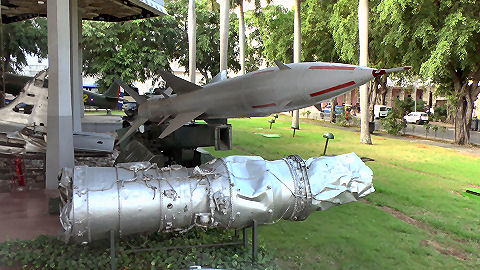 |
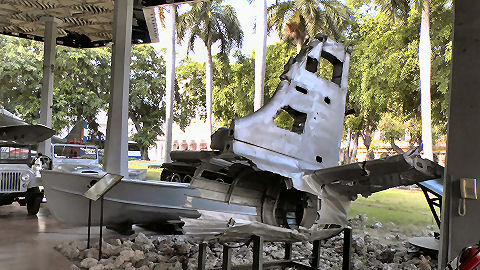 |
|
A
Soviet SA2 surface to air missile, the type brought down this USAF U2 spy
plane on 14 October 1962
- PHOTOs Malcolm McCrow |
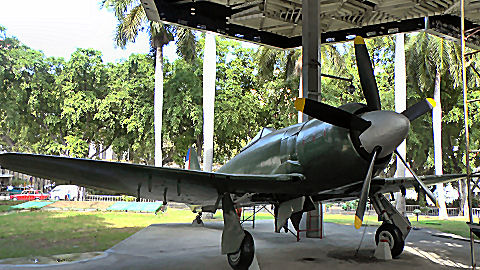 |
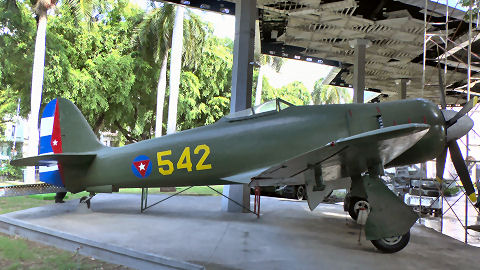 |
| Other exhibits
include a British Hawker Sea Fury used at the Playa Giron - Bay of
Pigs - where Government Forces repelled an attempted invasion in January
1961
- PHOTOs Malcolm McCrow |
 |
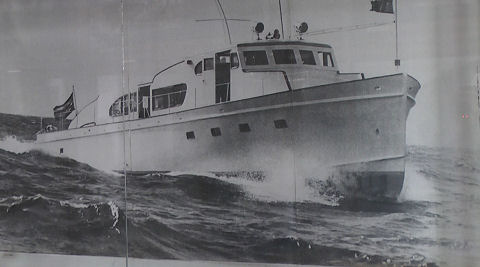 |
| The glass pavilion
houses the yacht GRANMA in which Fidel Castro returned to Cuba from exile
in Mexico. Visitors cannot enter the pavilion and obtaining good pictures
of GRANMA is virtually impossible. The black and white photograph is
displayed on the wall of the San Francisco Monastery - now a museum - in
Trinidad
- PHOTOs Malcolm McCrow |
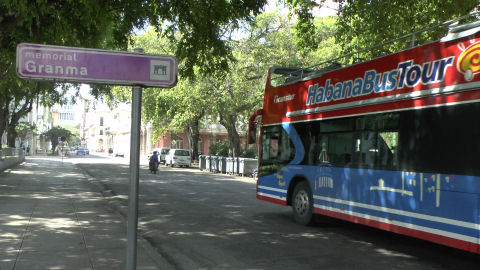 |
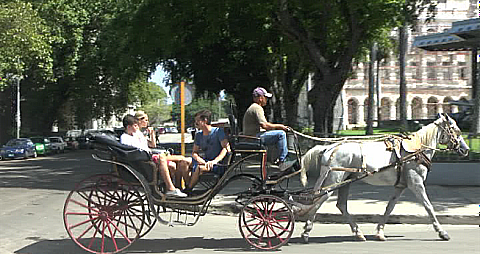 |
| The Havana Bus
Tour operates a fleet of hop-on hop-off modern Chinese double deckers.
Alternatively you could take one of the many horse drawn carriages
- PHOTOs Malcolm McCrow |
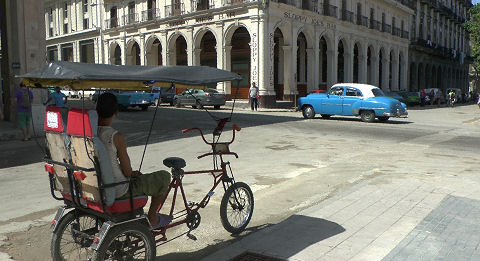 |
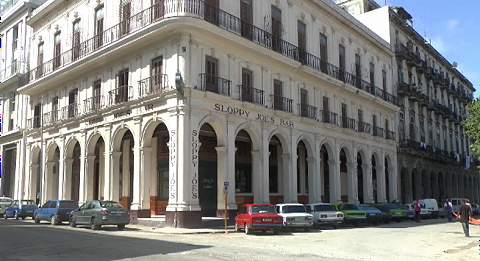 |
| A tricycle taxi
seen outside the restored Sloppy Joe's Bar which features briefly in the
film "Our Man in Havana" starring Alec Guinness and made in 1959 -
PHOTOs Malcolm McCrow |
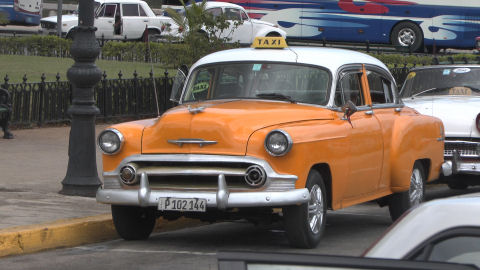 |
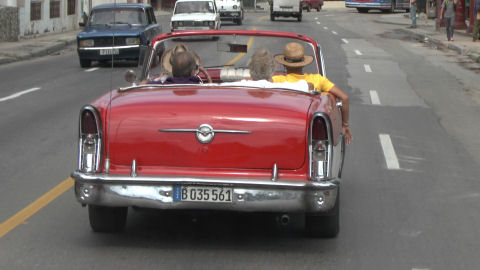 |
| Another way of
touring the city is by vintage taxi or hired limousine - a white licence
plate indicates private ownership; government owned vehicles have
licence plates bearing a blue flash - PHOTOs Malcolm McCrow |
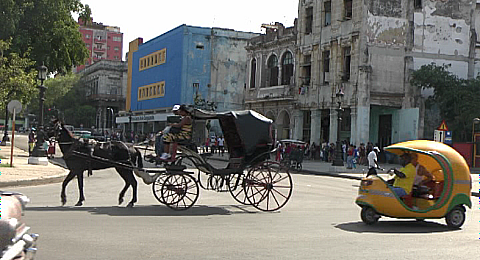 |
 |
| Three wheeled Coco
taxis are also popular, but if your Spanish is good enough you could try
one of the Metrobuses that operate in the city - PHOTOs Malcolm McCrow |
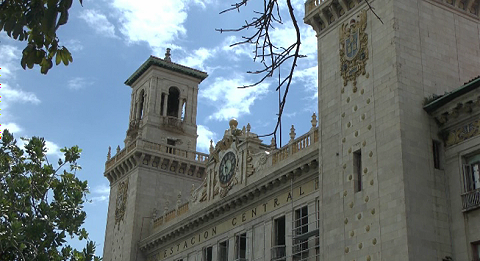 |
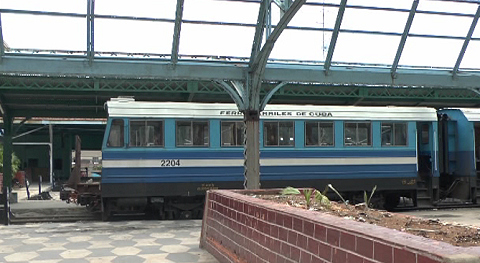 |
| Havana's
impressive railway station - Estacion Centrales - opened on 30
November 1912 but is in 2015 "cerrado
por obras de restauración", closed for restoration. A two-car diesel
multiple unit of the Ferrocarriles de Cuba stands forlornly at a deserted
platform - PHOTOs Malcolm McCrow |
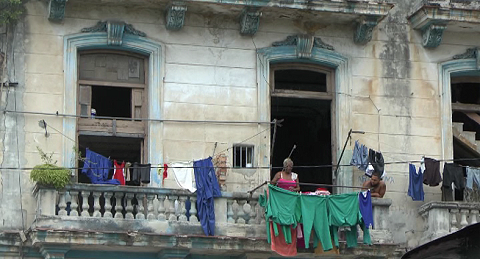 |
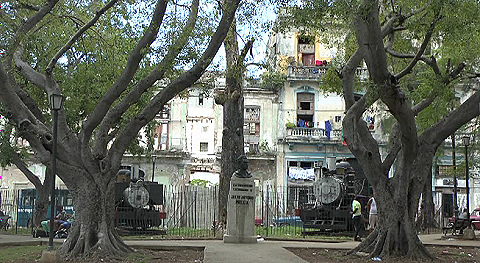 |
| Flats overlooking
the Parque de los Agrimensores - the Surveyors' Plaza - where
several steam engines have been put on display - PHOTOs Malcolm McCrow |
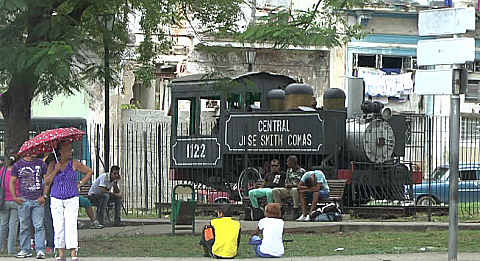 |
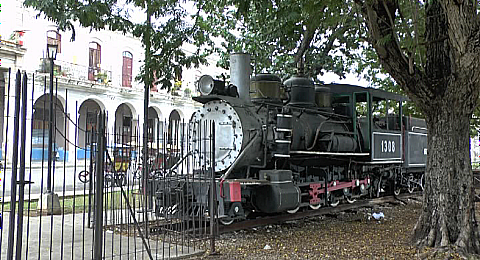 |
| The engines were
used on Cuba's sugar plantations, many of which had their own
sophisticated and extensive railway systems - PHOTOs Malcolm McCrow |
 |
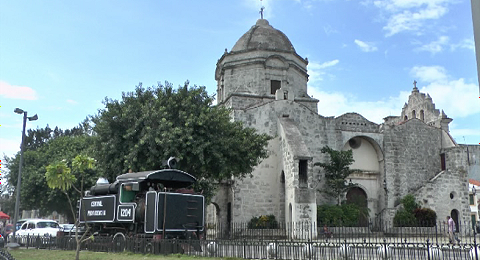 |
| More locomotives
can be seen at the Almacenes San Jose across from which stands the Iglesia de San Francisco de Paula - PHOTOs Malcolm McCrow |
 |
 |
| The
Almacenes San Jose is a large covered market on Desamparados across from
the Iglesia de San Francisco de Paula - PHOTOs Malcolm McCrow |
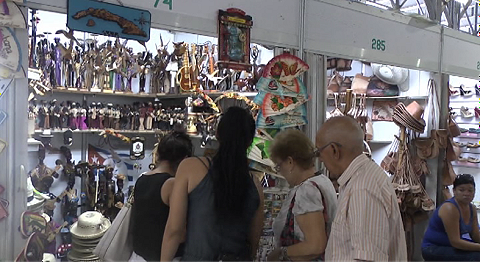 |
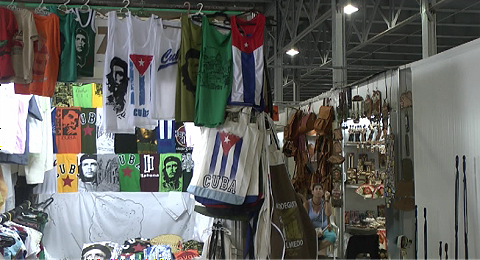 |
|
There are many government owned stalls nearly all of which
tend to sell much the same sort of ware - PHOTOs Malcolm McCrow |
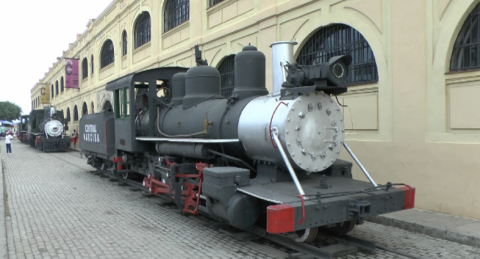 |
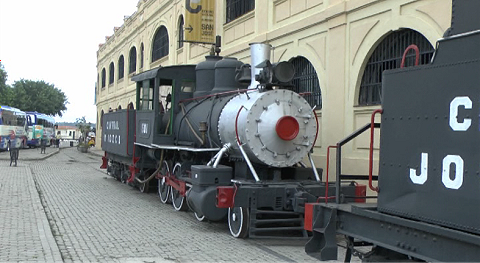 |
|
Some of the narrow and standard gauge steam locomotives
displayed outside the Almacenes San Jose - PHOTOs Malcolm McCrow |
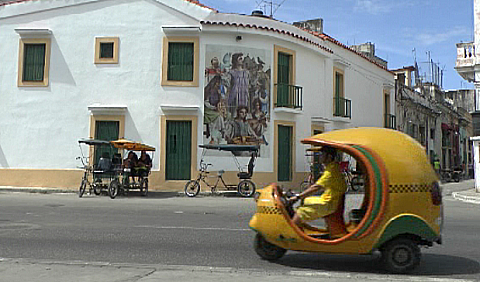 |
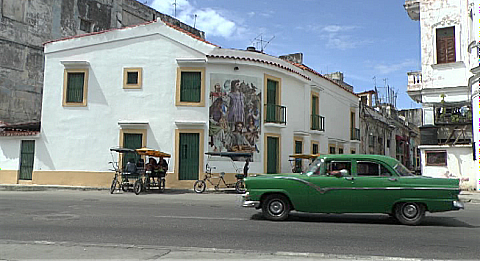 |
| Coco taxi and
vintage automobile on Desamparados at San Ignacio near
the Almacenes San Jose - PHOTOs Malcolm McCrow |
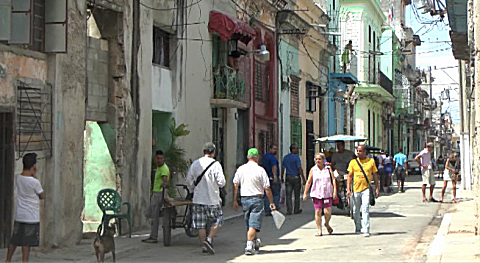 |
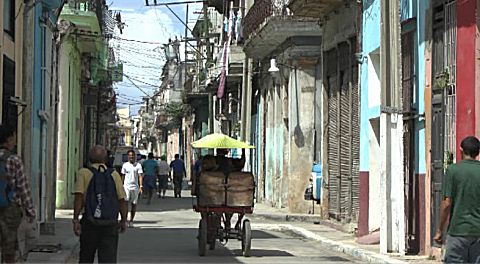 |
| Heading up Calle
San Ignacio, one of the maze of narrow streets that
make up Habana Vieja - Old Havana - PHOTOs Malcolm McCrow |
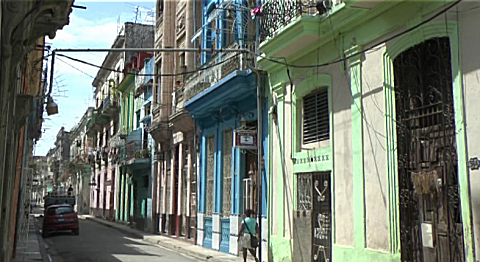 |
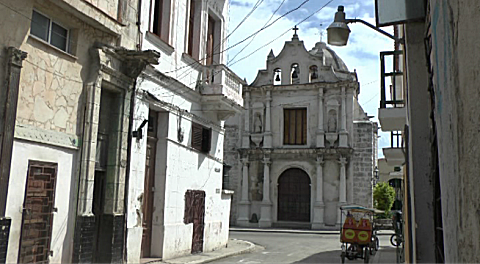 |
| Calle Merced
(above) and the Iglesia de San Francisco de Paula at the head of
Calle San Ignacio (right) - PHOTOs Malcolm McCrow |
 |
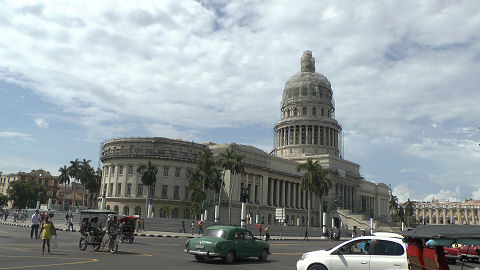 |
| Not all carriages
are as dilapidated as this one. Parked strategically outside the
Almacenes San Jose its two man crew were only too pleased to stand
in for the Hop-on Hop-off Tour Bus which failed to arrive to take
passengers to the Capitol. El Capitolio was the seat of government until the
Revolution in 1959 after which it became the home to the Cuban Academy of
Sciences - PHOTOs Malcolm McCrow |
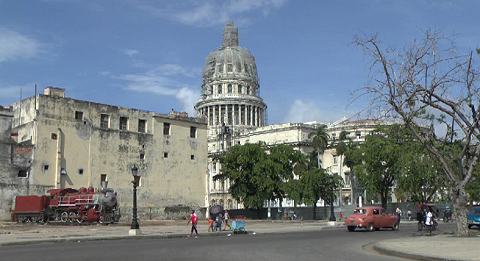 |
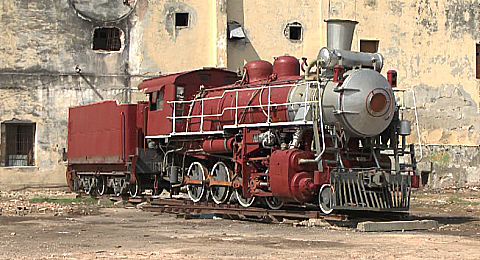 |
| And behind the
Capitol which is cerrado por obras de
restauración - closed for
restoration - is yet another steam locomotive!
PHOTOs Malcolm McCrow |
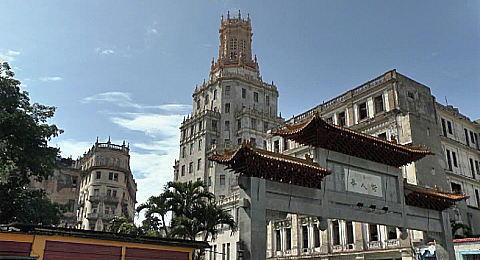 |
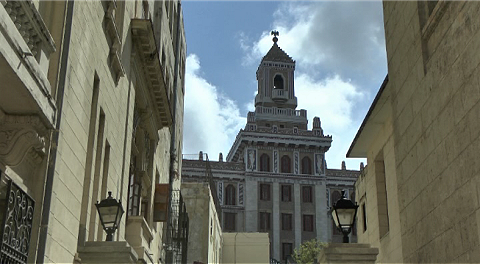 |
| The entrance to
Havana's Chinatown which was once the largest in Latin America. The
art deco Bacardi Building, once the tallest in Havana, has been
restored and is used as office accommodation for Cuban and overseas
organisations - PHOTOs Malcolm McCrow |
 |
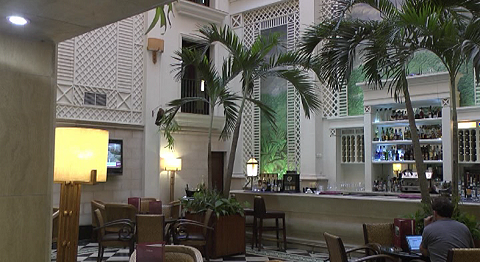 |
| The luxury
restored Hotel Saratoga on the Prada across from the Parque de
la Fraternidad - PHOTOs Malcolm McCrow |
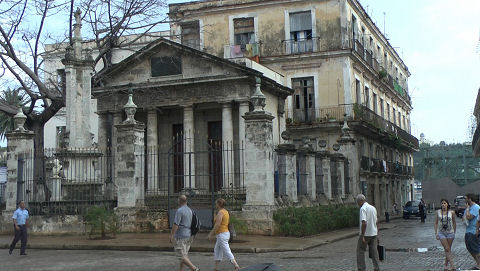 |
 |
| El Templete (left)was
erected in 1829 to commemorate the establishment of the town of St
Christopher of Havana in 1519. Opposite is the Palacio des les
Capitanes Generales (right) - PHOTOs Malcolm McCrow |
 |
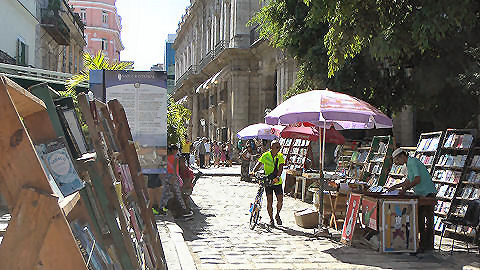 |
| Calle Tacon, or
Wooden Street (left), is the only street remaining that is paved with wooden
blocks. The wooden blocks reduced the noise of the carriages passing
the Palacio de los Capitanes Generales. Bookstalls on
Calle del Obispo - Bishop's Street - by the Palace of the Captain Generals (right) - PHOTOs Malcolm McCrow |
 |
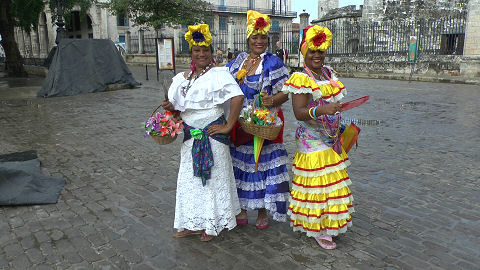 |
| These ladies near
el Templete are state employees who, for a fee, will pose for photographs - PHOTOs Malcolm McCrow |
 |
 |
| Calle del Obispo
leads up from Wooden Street past canons and canon balls to the Hotel Amos
Mundos and the Bodeguita del Medio, once patronised by Ernest Hemingway - PHOTOs Malcolm McCrow |
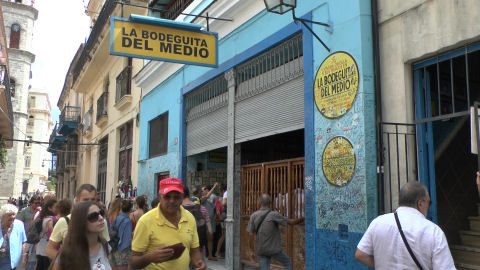 |
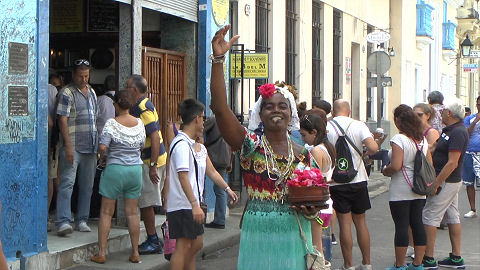 |
| The graffiti
covered Bodeguita del Medio was also frequented by Nat King Cole. It
is reputed to have originated the mojito cocktail - PHOTOs Malcolm McCrow |
 |
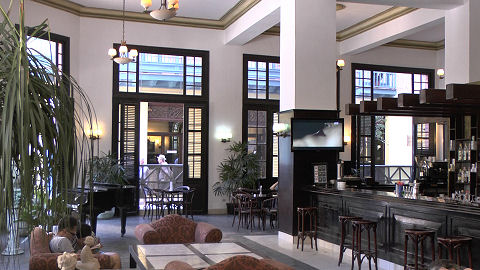 |
| The Hotel Ambos
Mundos where Hemingway stayed in the 1930s. It has retained the
atmosphere of the period - PHOTOs Malcolm McCrow |
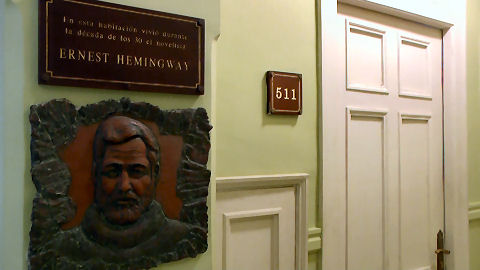 |
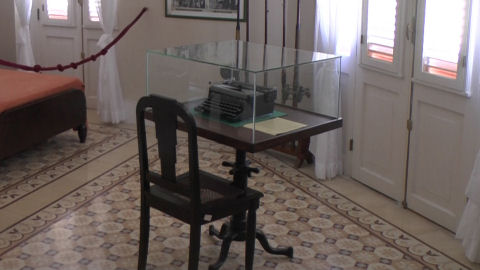 |
| Room 511 has been
fitted out with period furniture and Hemingway's typewriter, enclosed in a
glass case, takes pride of place in the centre of the typically tiled room - PHOTOs Malcolm McCrow |
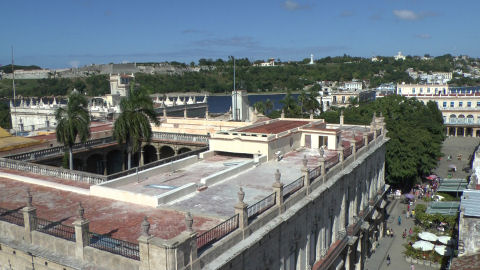 |
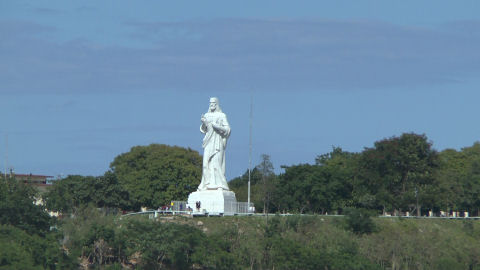 |
| Christ of Havana
statue viewed from the rooftop bar of the Hotel Ambos Mundos - PHOTOs Malcolm McCrow |
 |
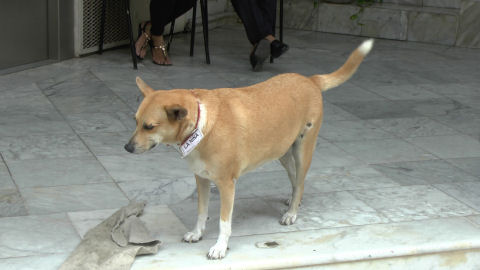 |
| Feral dogs like
Cortico (above) are a common site throughout Cuba, but in Havana
those owned and protected by the city wear collars with IDs that protect
them from being lifted by the dog wardens - PHOTOs Malcolm McCrow |
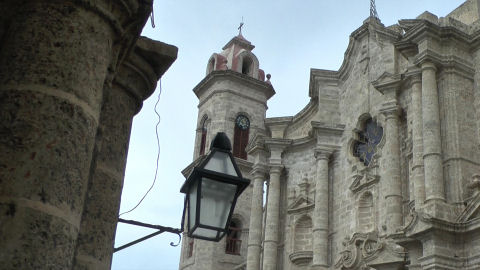 |
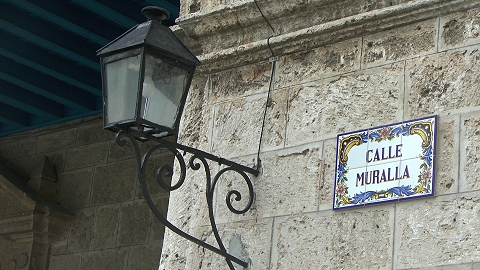 |
| Havana's Cathedral
of The Virgin Mary of the Immaculate Conception
(right) - PHOTOs Malcolm McCrow |
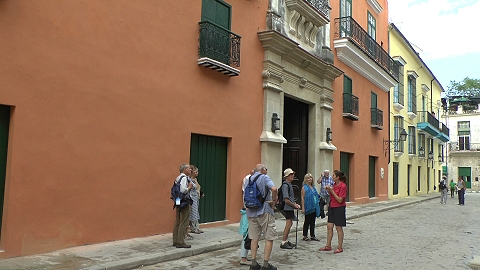 |
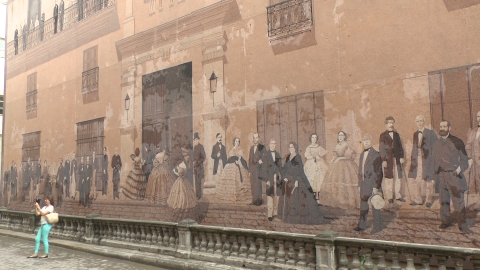 |
|
Under restoration - the house of Marquis de Arcos:
across from it a faded mural is a mirror image of the house and depicts 67
figures of Havanan and Cuban history most coinciding with the period from
1844 to 1855 - PHOTOs Malcolm McCrow |
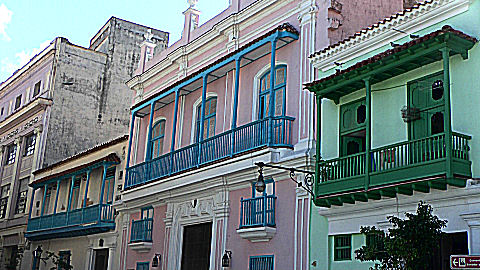 |
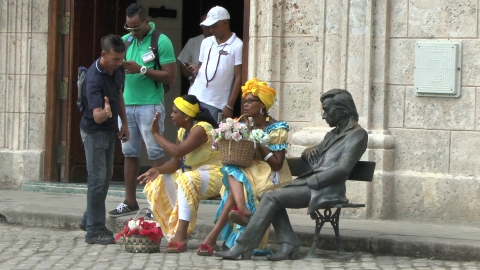 |
| Carmen Montilla
Gallery - one of many restored building in Calle Oficios - PHOTOs Malcolm McCrow |
 |
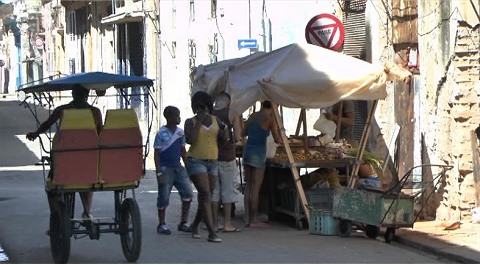 |
| The Hostel
Balcones (left) in the labyrinth of calles making up Old
Havana - PHOTOs Malcolm McCrow |
 |
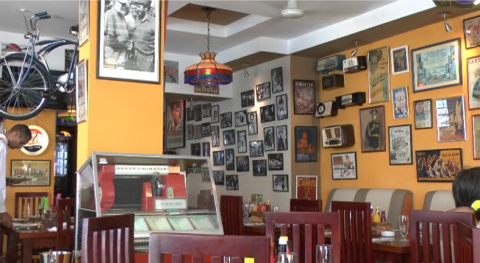 |
| A bar in a corner
of the Plaza Vieja - Old Square - decorated with old radios,
photographs of times gone by and other paraphernalia - PHOTOs Malcolm McCrow
|
 |
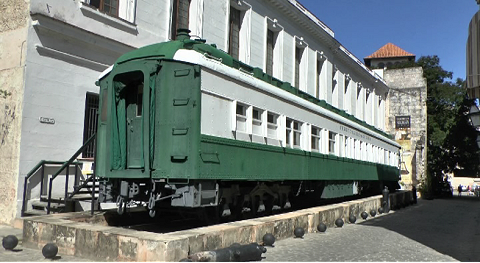 |
| Next to the
Camara de Representantes - the former House of Representatives - is
the Mambí Railway coach which was used as the Presidential Car - PHOTOs Malcolm McCrow |
 |
 |
| Hasta la
victoria siempre - always until victory - the
inscription below Che Guevara on the
Ministry of the Interior Building in Revolution Square - PHOTOs Malcolm McCrow |
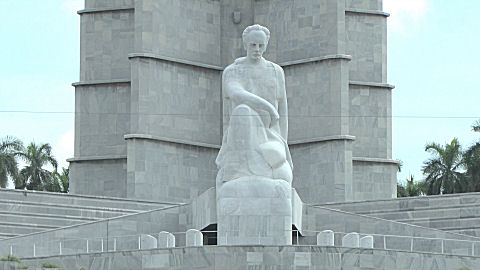 |
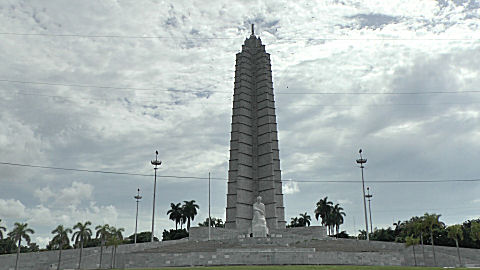 |
| The 18 metre high
statue of José Marti in front of the massive tower in the Plaza de la
Revolución - PHOTOs Malcolm McCrow
|
|
Home Page |
Vinales |
|
Cuba |





































































































